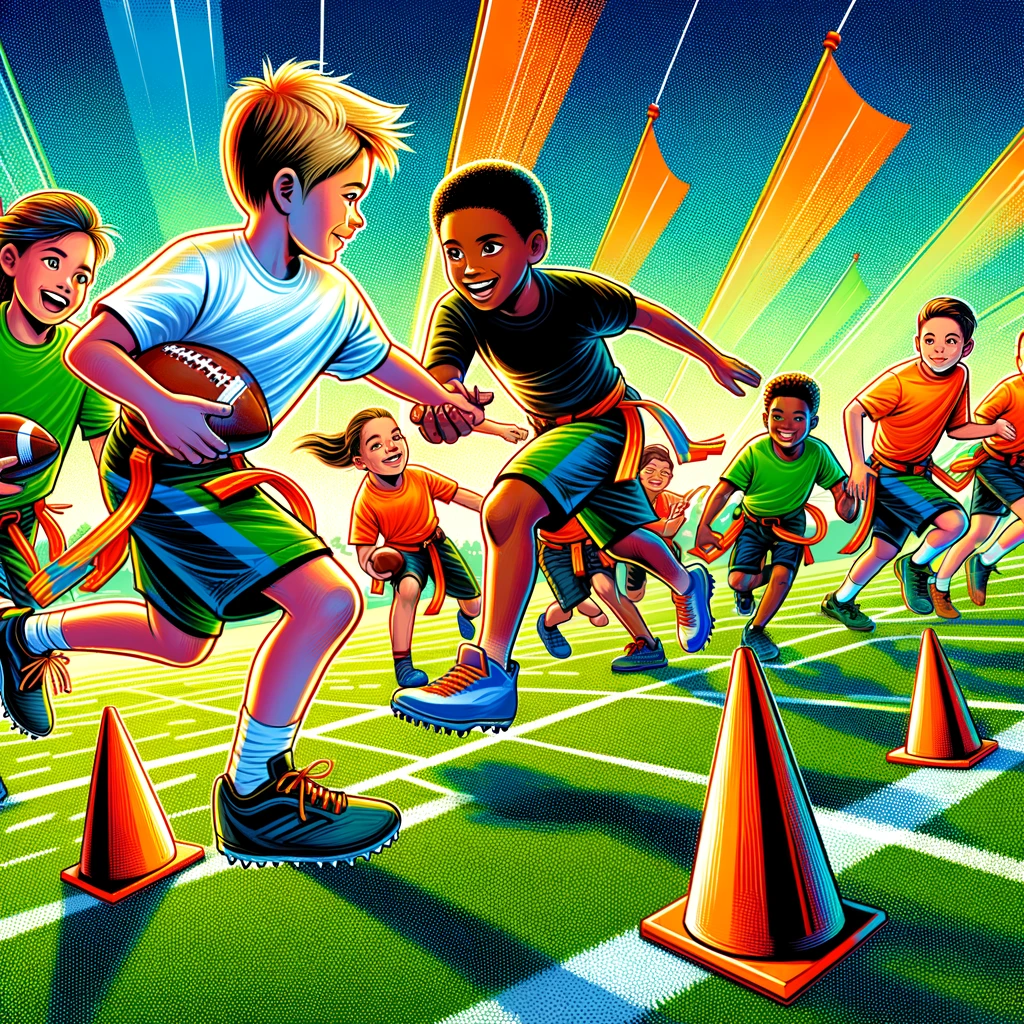Non-Contact Blocking Techniques in Youth Flag Football

Hello Flag Football Family! Today’s blog is all about a critical yet often overlooked aspect of youth flag football – non-contact blocking techniques. As coaches and parents, it’s our responsibility to teach young players how to block effectively without physical contact, ensuring a safe and fair game for all.
Why Non-Contact Blocking?
In flag football, traditional blocking (like in tackle football) is replaced with non-contact methods. This shift not only keeps our young athletes safe but also emphasizes skill, strategy, and sportsmanship.
The Fundamentals of Non-Contact Blocking
Non-contact blocking is about positioning, movement, and awareness. It involves:
- Body Positioning: Using your body to shield or steer defenders away from the ball carrier.
- Footwork: Quick and agile movements to stay between the defender and the ball.
- Hand Usage: Using open hands to guide rather than push or hold.
Teaching Effective Non-Contact Blocking
- Start with Stance and Balance: Teach players to maintain a balanced stance, ready to move quickly in any direction.
- Focus on Footwork: Agility drills can improve footwork, crucial for effective non-contact blocking.
- Use of Hands: Practice using open hands to guide defenders away, ensuring players understand the difference between guiding and pushing.
- Spatial Awareness Drills: Teach players to be aware of their surroundings, helping them to position themselves effectively.
- Shadow Blocking Drills: Have players practice shadow blocking, where they mimic blocking a player without making contact.
- Communication Skills: Effective communication helps coordinate team efforts in blocking.
- Game-like Scenarios: Simulate game situations in practice to give players a real feel for non-contact blocking.
- Rules Education: Ensure players understand the rules regarding blocking in flag football to avoid penalties.
Role of Coaches and Parents
Coaches and parents should emphasize the importance of skill and strategy over physical strength. Positive reinforcement and patience are key in helping young players master these techniques.
Wrapping Up
Non-contact blocking is a skill that requires practice and understanding. By focusing on these techniques, we not only keep the game safe but also encourage our young players to develop strategic thinking and agility.


